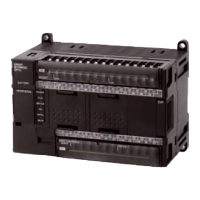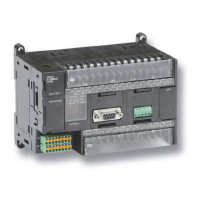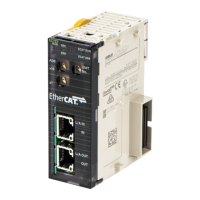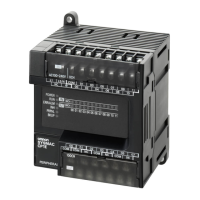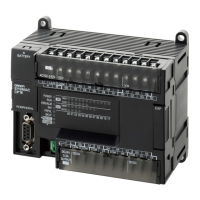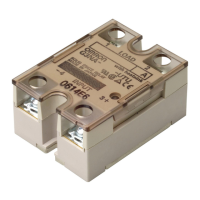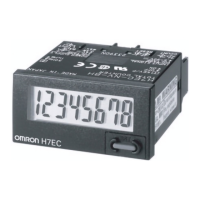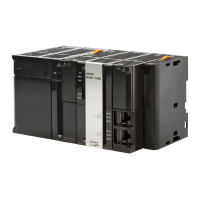116
Wiring and Connections Section 4-7
!Caution Disconnect the LG terminal of the Power Supply Unit when performing dielec-
tric strength tests.
!Caution Use crimp connectors for wiring. Do not connect bare stranded wires directly
to terminals.
!Caution Do not remove the seal from the top of the Power Supply Unit until wiring has
been completed. Remove the seal before operating the Unit to prevent over-
heating.
AC Power Supply Unit
Wiring
The following diagram shows the proper connections to an AC power supply.
The AC voltage should be between 100 and 240 V AC (50 to 60 Hz). Refer to
3-2-2 Selecting a Power Supply Unit for details on Power Supply Unit capacity.
!WARNING Do not touch any of the terminals while the power is being supplied. Doing so
may result in electric shock.
!Caution Tighten the AC power terminal screws to a torque of 0.8 N
⋅m. Loose terminal
screws can cause fires or errors in operation.
!Caution Be sure that the AC power supply voltage remains within the allowable voltage
range. For details refer to 2-1-1 Power Supply Units.
The CQM1-PA216 Power Supply Unit is switchable with an input voltage
range of 80 to 138 V AC or 160 to 264 V AC. Refer to 3-2-2 Selecting a Power
Supply Unit for details.
Crimp Connectors Use round M3.5 crimp connectors of the dimensions shown below for wiring
AC Power Supply Units.
Note Always use crimp connectors for wiring. Do not connect bare stranded wires
directly to terminals.
An insulating transformer greatly
reduces the noise that may be
induced between the power line and
ground. Do not ground the secondary
side of the insulating transformer.
The cross-sectional area of each wire must be 2 mm
2
min.
Twist the wires.
Insulating transformer
Breaker
AC power supply
7 mm max.
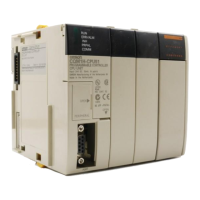
